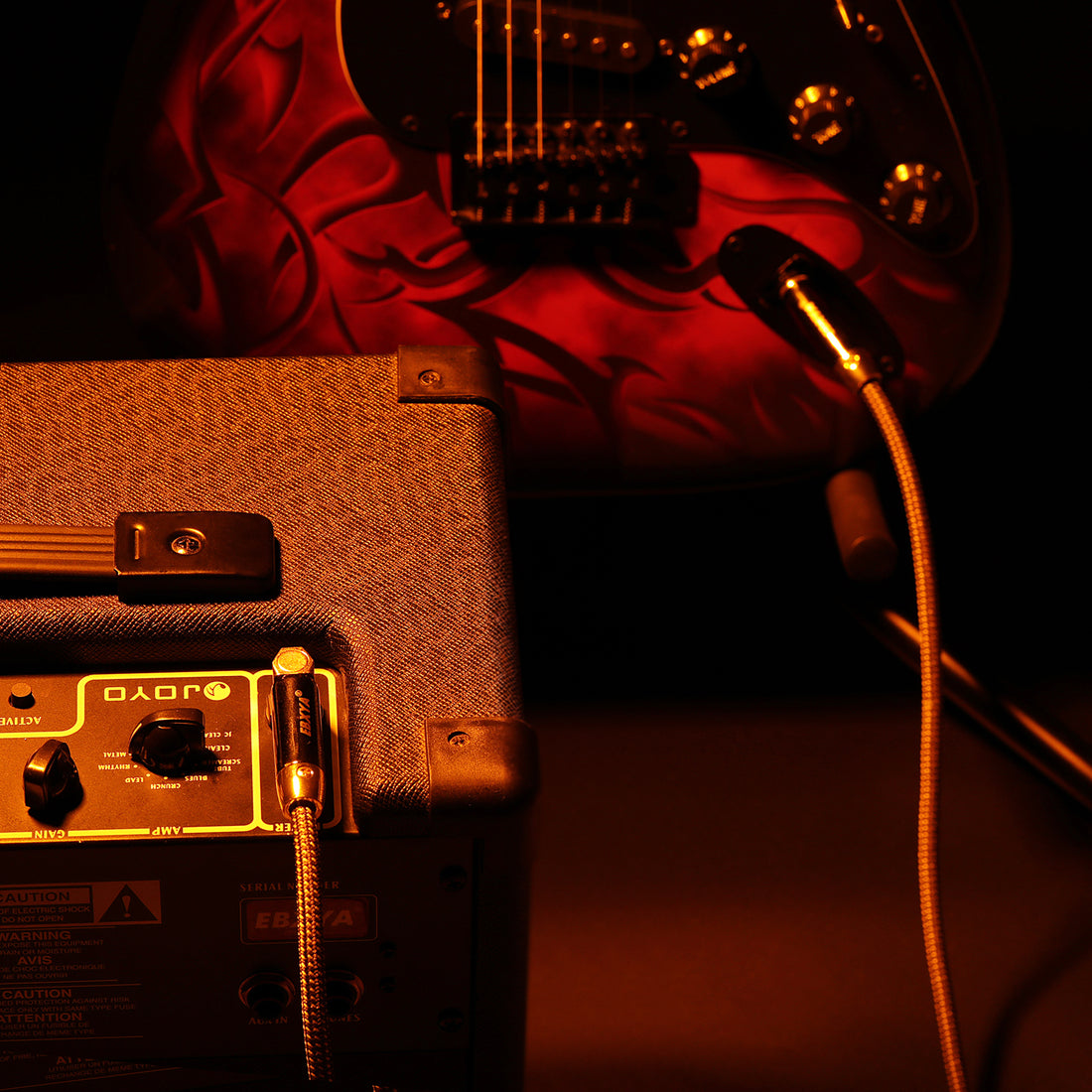
The truth about guitar cables that guitarists must know(Content)
Share
While many guitarists want to get the perfect tone and effect, some people tend to overlook the most important part of the cable. With that said many of you may think we are making a big deal out of it, but that is exactly what is happening. Different cables can have a very big impact on your sound, and in some cases, these effects are huge. Even if you're using the same amp or pickup, different cables will make a difference in how your sound sounds. So it's easy to see why some guitarists insist on using fixed pickups, cables and amps, so you need to understand the differences between cables and learn how to compensate for these mistakes.
Three Factors
Before you plug your instrument into an amp or any effects, there are three reasons that already determine your tone
1, pickup output impedance (we are all assuming standard pickups here, not active pickups)
2, the capacitance of the cable
3, speaker input impedance
Before we start to explain the cable, let us first for you to carry out a simple introduction, these are very easy to understand. First of all, the capacitance of the cable is the second factor that can produce control of the tone, in addition to the pickup. Capacitance is a frequency effect sensitive component, and high frequencies are more likely to pass through capacitance. Therefore, when placing the capacitor, it needs to shunt its high frequencies to the ground so that the high frequencies can be effectively reduced. The low frequencies in the capacitor block, on the other hand, do not need to be shunted to ground; they are released with the output.
Any cable has a certain capacitance, although it is far less significant than a tone control system, but in some cases it can have a very significant impact
Speaker In Impedance
When you send a signal to a speaker, some of the signal will be lost as it is sent, just like a pipe leak. The amount of signal lost depends on the input impedance of the speaker. A low input impedance will overload your sound and produce a very "sluggish" sound. (Interestingly, tube speakers have always maintained a fairly high input impedance, which is one of the reasons why tube speakers have endured)
The impedance of a loudspeaker affects many things, such as electrical equality, but the tone control system still holds up well. Capacitance itself is only part of the tone control system, the higher the impedance, the better the effect of the tone control system. This is why some speakers on the tone control system has excellent performance. Although high input impedance speakers will make the tone smoother and easier to control (the downside is that it is very easy to pick up noise, RF and other types of interference), and this will also highlight the impact of the cable capacitance. And when you use high-frequency input impedance speakers, the cable will also
will be deprived of part of the high frequency.
output impedance
Finally we will explain the output impedance of the guitar, which is the equivalent of connecting a resistor in series as the guitar lowers its volume. Almost all standard pickups have a relatively high output impedance, while active pickups have a low output impedance. Because of the input impedance of the amp, then the cable is just as capable of changing your sound. If the guitar has a high output impedance, then there will be a big impact on the guitar cable capacitance, if the output impedance is low, then the impact is not significant
Here we have another cost, which is the interaction between the output impedance of the guitar and the input impedance phase of the amp. Typically, if you are using a standard pickup and want to minimize signal loss (especially in high frequency signals), then you must need a very high speaker input impedance. However, the output impedance of the active pickup will be epidemic with the input impedance of the speaker
